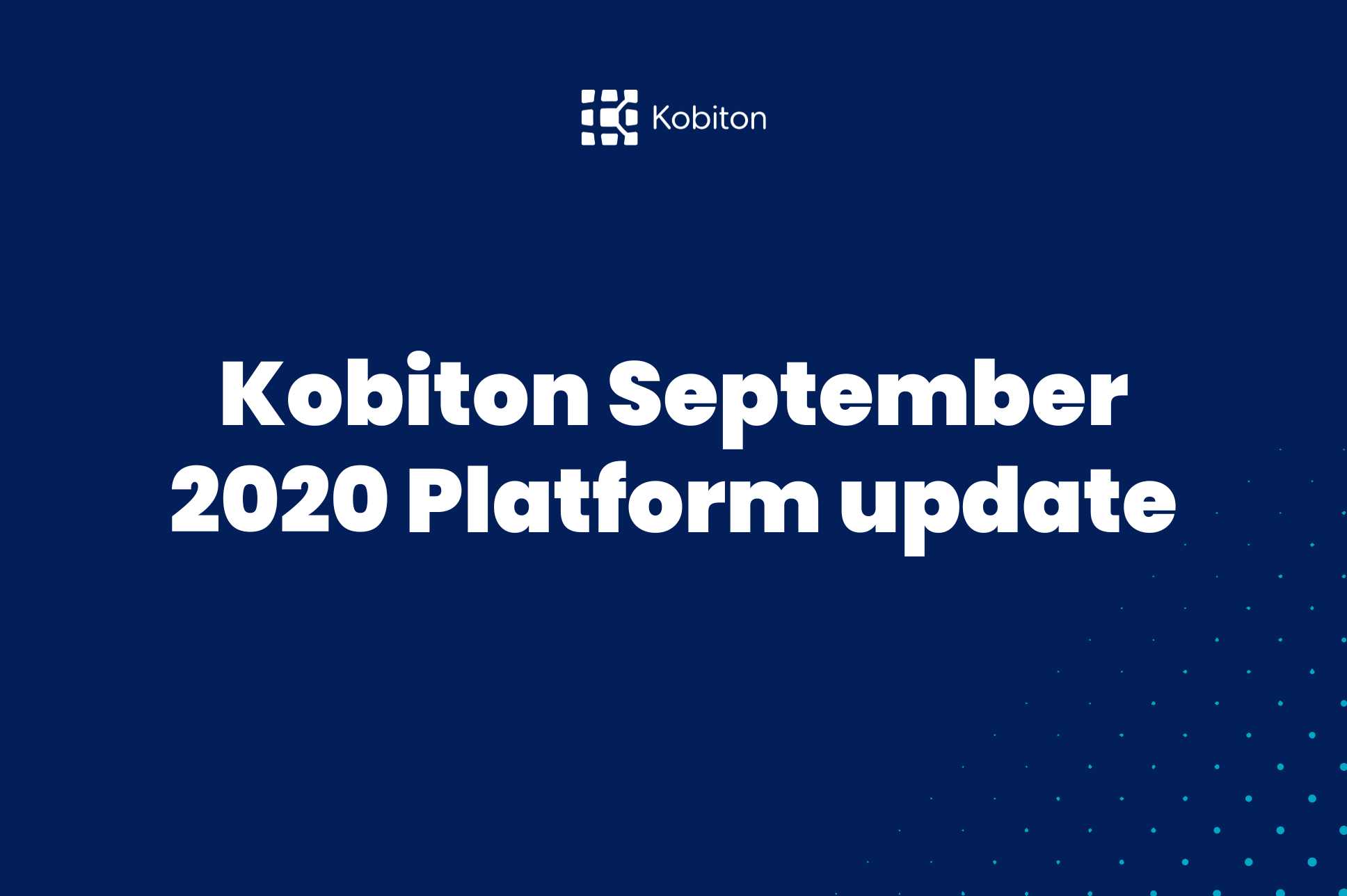
Kobiton September 2020 Platform update

Adam Creamer
Kobiton’s Intelligent Test Automation engine is the industry’s first and only scriptless option for building and running mobile test automation. Our customers have been raving about this capability, and we’ve gone and made it even better. In our latest release, we added:
Keep reading to learn more!
If you know ITA, then you know that it takes one captured manual process and turns that into an automated test script that can be run across your entire device library. What you might not know is that the script generated by ITA is 100% open-standard Appium, and that we give you the ability to export it.
You might be asking yourself: “Why would Kobiton do this? Doesn’t this keep them from locking me into a proprietary solution? After all, all of the other vendors out there aren’t just giving us freely generated code to use.”
If you’re asking that question, you’re right. This IS a solution that’s anti-proprietary-lock-in. And that’s why we made it. We love the flexibility and potential of open-sourced solutions, and we want to make sure that you can best use what we help you create with ITA.
Simply put: it means that you can do whatever you want with your ITA-generated Appium script. Do you want to export your script and plug it into your IDE? Go for it. Want to run it on one of our competitor’s infrastructure platforms? We think you’d like Kobiton more, but sure, you can do that. And, perhaps most exciting, if you think you’ve generated something really special, sell it within and outside your own organization. With Kobiton, the code really is yours to use, and we strive to be the platform that keeps your investment protected.
One of the more challenging components of any automated testing strategy is ensuring that you are testing against the right sets of data. After all, if the data isn’t right, then your tests will likely lack coverage for day-to-day actions on the user end.
Traditionally, testers are tasked with coming up with and making sure that certain values and data-sets are covered by their test runs. What this really means is that you are likely re-scripting for each data-set or different value that you need to run your tests against. Let’s be honest: this is a time-intensive process that any tester would avoid if they could.
Our response? Data-driven testing. Now, you can parameterize your tests by way of inputting custom data-sets outside of the script before the test is executed. These data-sets will then be attached to your ITA test so that ITA knows to run through those exact data-driven scenarios when it automatically executes your test across your real devices.
This means you spend less time re-scripting while also improving coverage so that you can help your teams deliver a perfect mobile experience faster and at higher quality. And it also might help you leave work earlier!
We are known for our flexibility when it comes to deployment, and our customers really value having access to private devices in the cloud as well as the ability to “cloud-ify” local devices. While there are many benefits to using private and cloud-ified local devices, one major value add is the ability to always have your devices available to your team for testing, as opposed to having to wait for devices to be available in our public cloud.
As of this release, you can now combine the power of ITA with the flexibility and privacy of private and local devices in the cloud. As a result, ITA doesn’t have to wait for the public-cloud devices to become available, allows you to really unlock the power of continuous testing for mobile.

When it comes to the actual devices under ITA-test, you now have full control over how those tests are orchestrated across devices. With our configurable device bundles, you can group devices however you want, and then you can tell ITA which bundle(s) to execute against. This is great for teams who might have certain device groups that they want to run regression tests, smoke tests, etc. against.
We are really excited about what these updates bring to you and your teams, and we hope that you’ve enjoyed this product update. For more technical information concerning how to use these new features, make sure to check out our support portal, and please do let us know what you think!